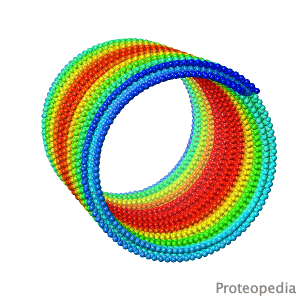Proteopedia:Featured SEL/9: Difference between revisions
Jump to navigation
Jump to search
m Protected "Proteopedia:Featured SEL/9" [edit=sysop:move=sysop] |
Eric Martz (talk | contribs) No edit summary |
||
| Line 3: | Line 3: | ||
<imagemap> | <imagemap> | ||
Image:Featured-gas-vesicle-7r1c.gif|center | Image:Featured-gas-vesicle-7r1c.gif|center | ||
default [[ | default [[FirstGlance/Virus_Capsids_and_Other_Large_Assemblies#Bacterial_Gas_Vesicle]] | ||
</imagemap> | </imagemap> | ||
</td></tr> | </td></tr> | ||
Latest revision as of 06:42, 7 November 2022
 |
Bacteria float with nano-balloons.
ST Huber, D Terwiel, WH Evers, D Maresca, AJ Jakobi. Preprint 2022 doi: 10.1101/2022.05.08.489936 |